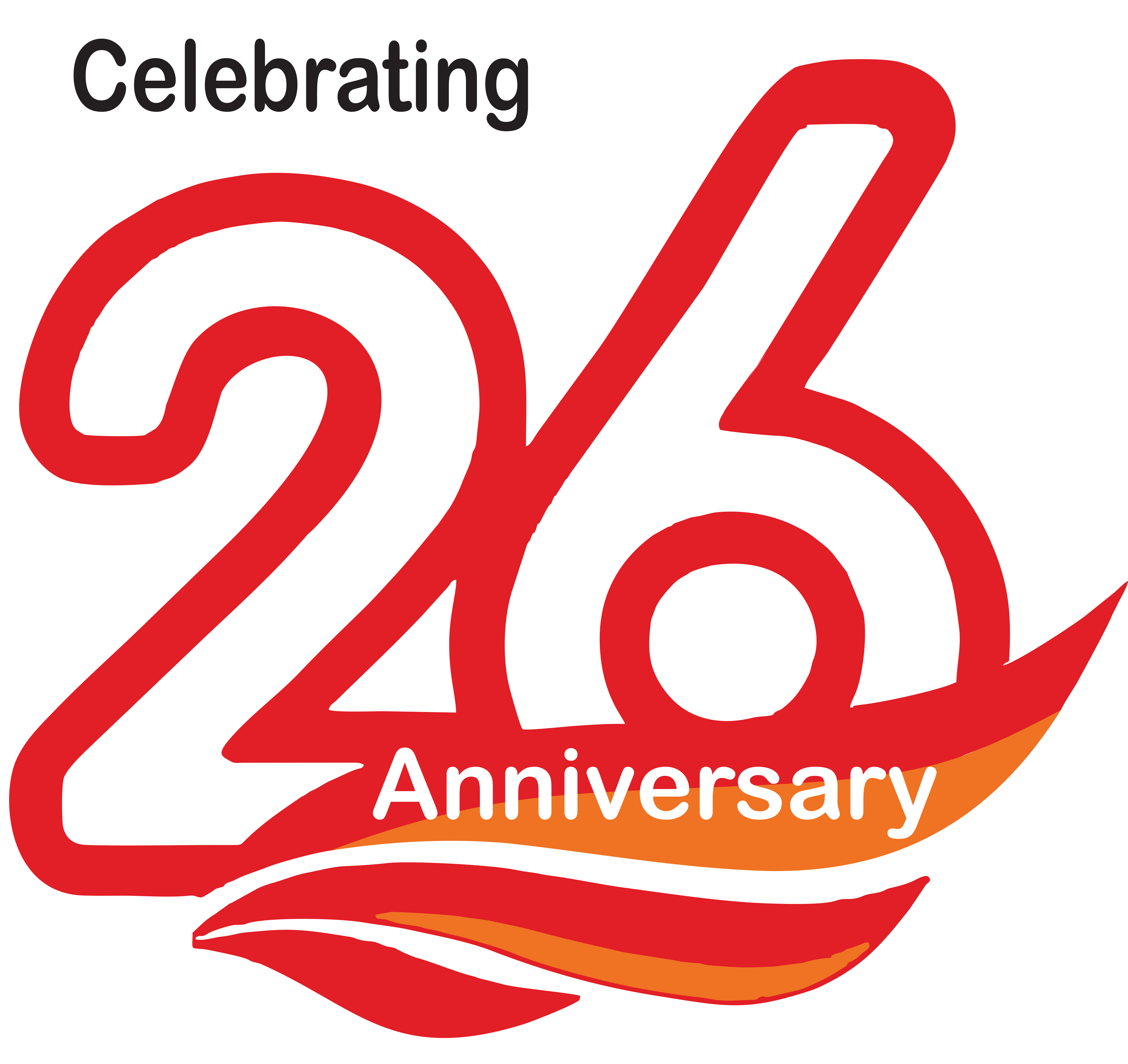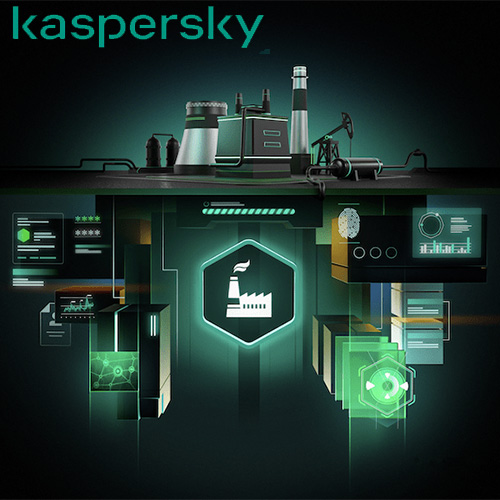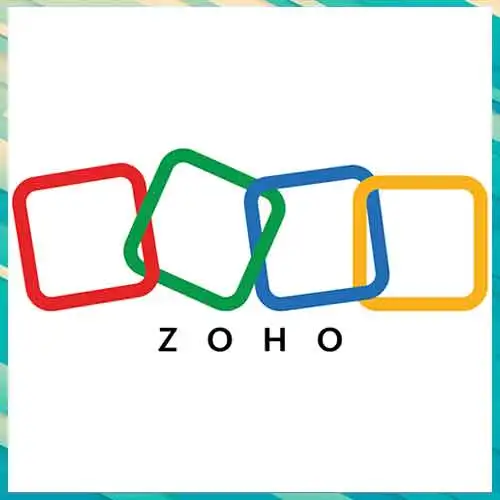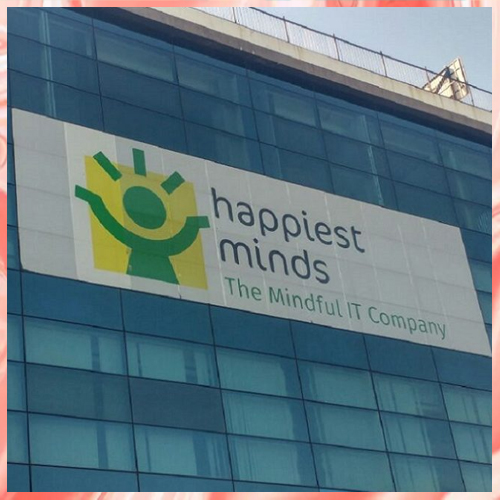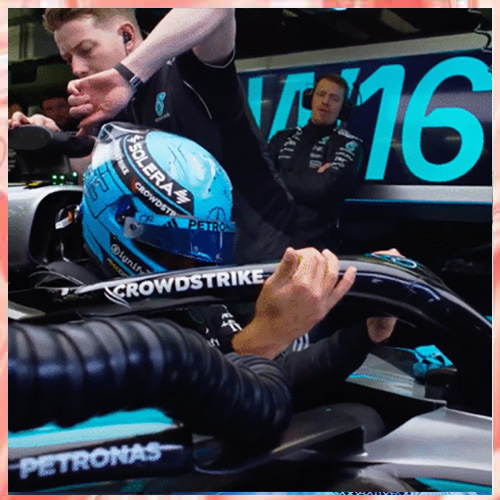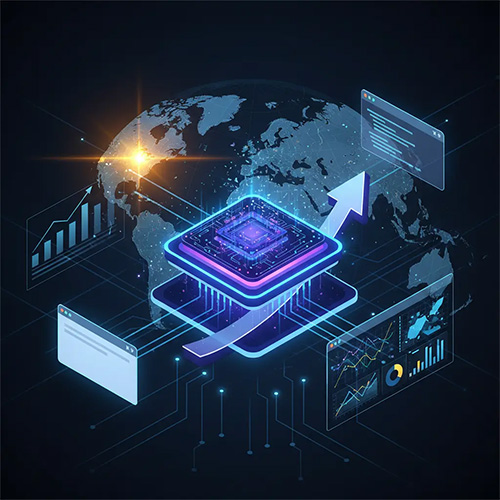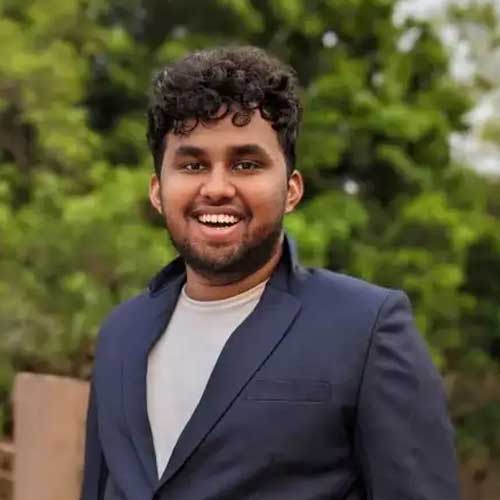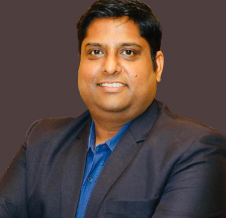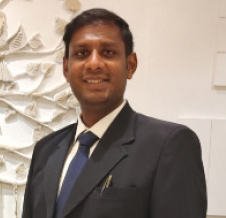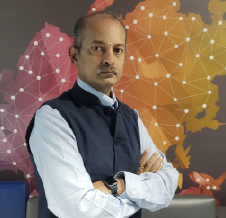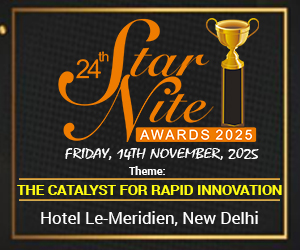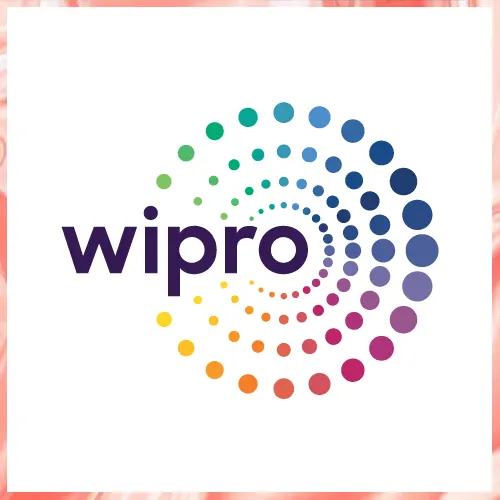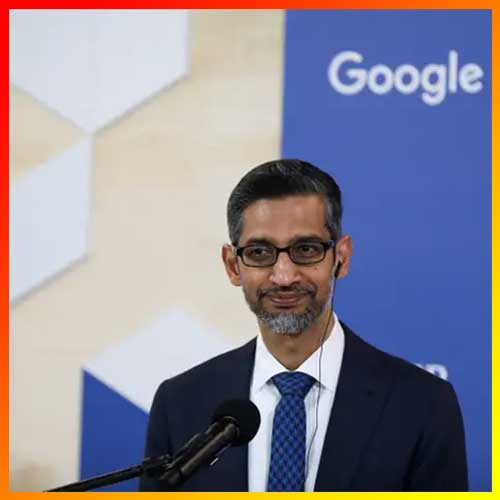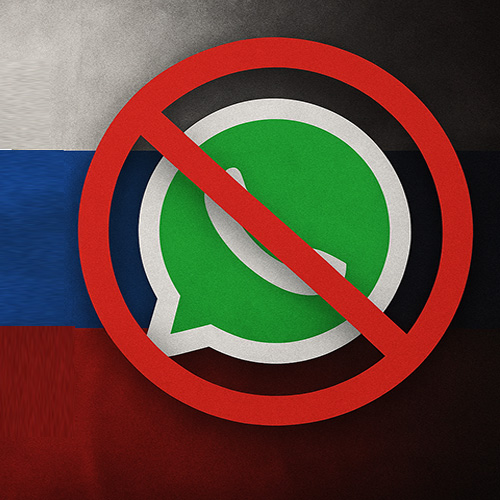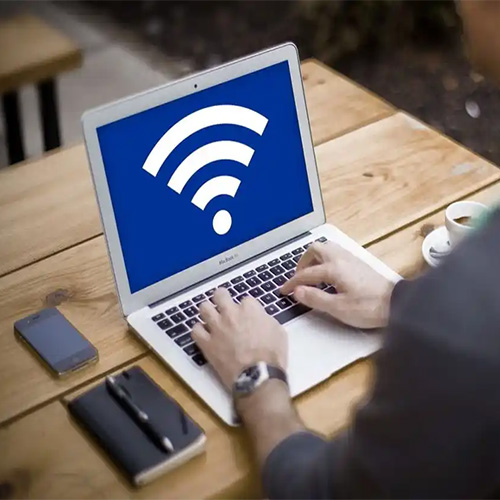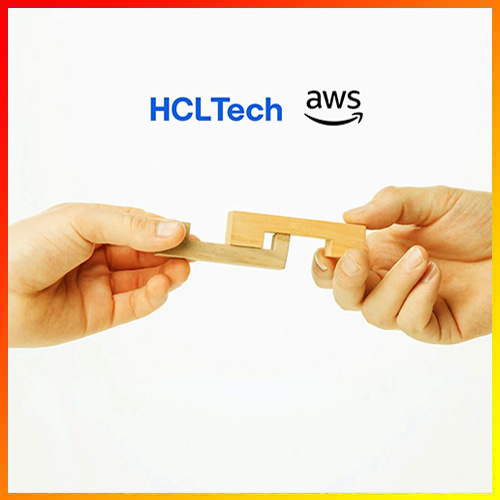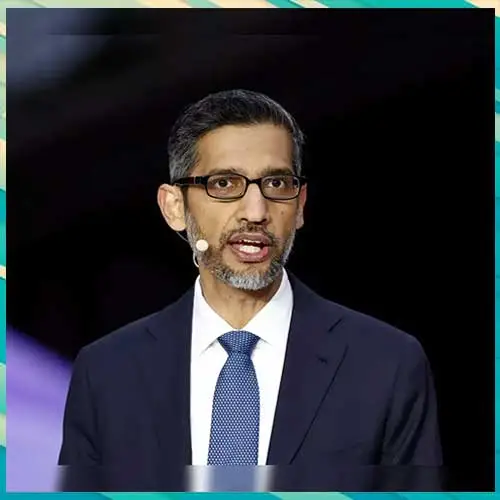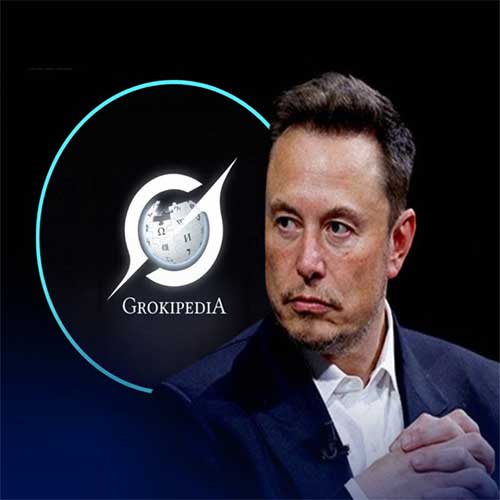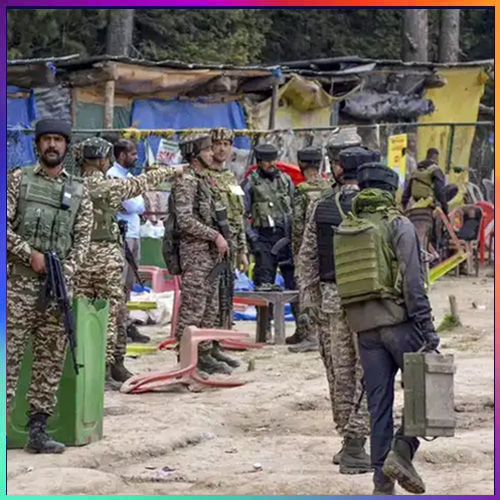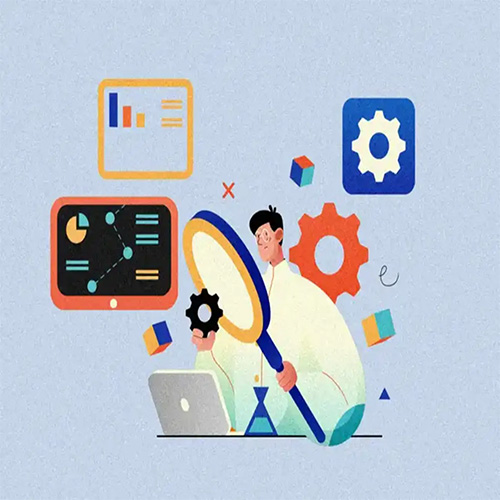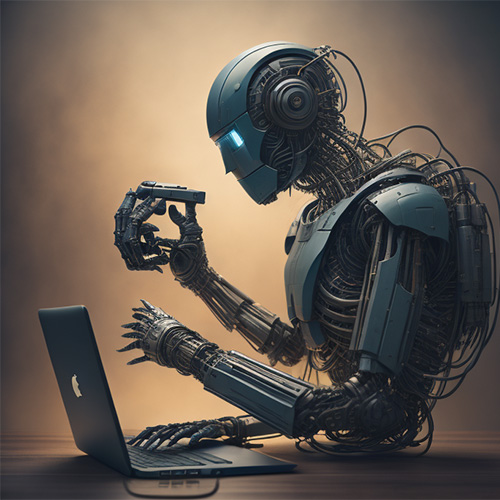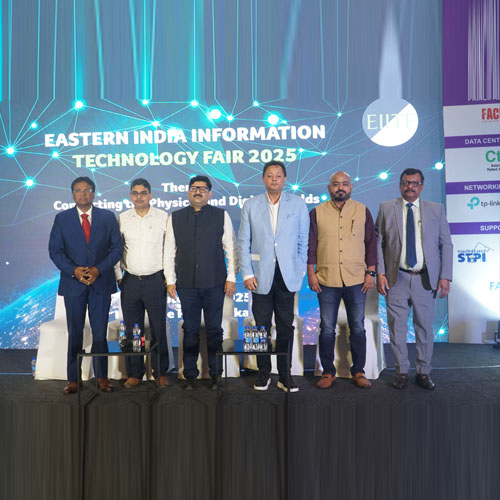
L-R: Dr. Debabrata Nayak, Director, PWC India; Prakash Tripathi, Sr. VP - IT, Shyam Steel Industries Ltd.; Dr. Pallab Ganguly, Chairman - IEEE ComSoc, Kolkata, and Alt. CISO, CESC Ltd.; Abhijit Chatterjee, Sr. Director - IT & Corp. Comm. & CISO - TCG Lifesciences Pvt. Ltd.; Rishikesh Kumar Singh, VP- IT & Digital, Grasim Industries Ltd (Aditya Birla); and Dr. Deepak Kumar Sahu, Editor-in-Chief, VARINDIA
The panel discussion “Connecting the Physical and Digital World”, moderated by Dr. Deepak Kumar Sahu, Editor-in- Chief of VARINDIA, brought together industry leaders to explore the growing impact of IoT in bridging physical systems with digital intelligence. Featuring insights from Dr. Debabrata Nayak, Director, PWC India; Prakash Tripathi, Sr. VP - IT, Shyam Steel Industries Ltd.; Dr. Pallab Ganguly, Chairman - IEEE ComSoc, Kolkata, and Alt. CISO, CESC Ltd.; Abhijit Chatterjee, Sr. Director - IT & Corp. Comm. & CISO - TCG Lifesciences Pvt. Ltd.; and Rishikesh Kumar Singh, VP- IT & Digital, Grasim Industries Ltd (Aditya Birla) – the session examined how IoT is transforming manufacturing, telecom, life sciences, utilities, and smart cities, while highlighting key challenges of security, data management, compliance, and business value creation.
DR. DEBABRATA NAYAK, DIRECTOR, PWC INDIA
Dr. Nayak highlighted how IoT is driving the convergence of digital and physical systems, both globally and in India. Internationally, the focus is on AI, Broadband, and Cybersecurity/Cloud (ABC), while India aligns this with its own ABC: Atmanirbhar Bharat (self-reliance), BharatNet (connecting villages), and Come Make in India (domestic innovation). With an estimated 19.2 billion IoT devices by 2025, India must manage connectivity, performance, and security. Nayak illustrated everyday IoT integration— smart appliances, flight safety through sensors and AI—and stressed the balance between human interaction and machines. From a telecom perspective, he pointed to IoT’s most impactful use case: fleet management and warehouse tracking, now evolving with 5G integration, which promises new revenue streams for telecoms. He also connected IoT innovation to India’s cultural heritage, likening defect detection in technology to lessons from Indian mythology.
PRAKASH TRIPATHI, SR. VP - IT, SHYAM STEEL INDUSTRIES LTD.
Tripathi emphasized that while IoT is often spoken of as new, its roots go back decades—similar to Nokia’s early vision of “connecting people.” In manufacturing, the biggest challenge is not just deploying sensors but ensuring quality, usable data that delivers meaningful insights. Sensors like heat and humidity gauges are common, yet organizations often fail to maximize the value of data from machines like rolling furnaces. IoT’s greatest industrial use case, he argued, is predictive maintenance, enabling companies to reduce downtime and plan production better. Drawing a practical analogy, he noted that ATMs have long used multiple sensors for currency authentication—an IoT model functioning offline for over 10 years. Tripathi concluded that IoT’s potential lies in proper partnerships, case studies, and ROI alignment, asserting that its future is rooted not in connected devices alone, but in “connected trust.”
DR. PALLAB GANGULY, CHAIRMAN - IEEE COMSOC, KOLKATA, AND ALT. CISO, CESC LTD.
Dr. Ganguly underscored the complex challenges of securing IoT systems, particularly in the power utility sector. He illustrated public hesitancy towards smart meters, noting that India’s Smart Grid Mission has been delayed to 2030 due to fears of rising tariffs and mistrust in technology. Ganguly stressed that IoT security cannot rely simply on protocols like MQTT, which—even when encrypted—still face vulnerabilities. Regulations also restrict direct IT-OT integration in critical infrastructure, yet business leaders continue to demand real-time dashboards. He argued that effective IoT security requires segmentation, encrypted protocols, and dedicated IT-OT integration via optical fiber systems to block cyberattacks. On impact, he cited smart city development where IoT can strengthen governance, national security, and urban services. Concluding metaphorically, he likened IoT’s digital support role to Krishna guiding Arjuna, ensuring resilience during disruptions.
ABHIJIT CHATTERJEE, SR. DIRECTOR - IT & CORP. COMM. & CISO - TCG LIFESCIENCES PVT. LTD.
Chatterjee explained that in life sciences, IoT plays a critical role in drug discovery, compliance, and traceability. Unlike manufacturing, labs generate vast volumes of diverse data from instruments like NMR, UPLC, and HPLC. Tools such as Terascience, LIMS, and MES standardize this data and create analytics-driven insights tied directly to scientific outcomes and regulatory needs (e.g., FDA’s CFR 21 compliance). He emphasized that IoT ensures medicines can be traced across the supply chain, with batch numbers linking back to raw materials, safeguarding quality. Chatterjee also highlighted infrastructure needs: IT-OT segregation, zero-client endpoints, one-way connectivity, and interoperable protocols (like OPC UA). He shared how sensors already track environmental conditions—temperature, light, and shock—during chemical-to-biological transfers, securing data integrity and GMP compliance. Metaphorically, he likened IT-OT connectivity to body tissue, warning that neglecting it could act like cancer, destabilizing systems.
RISHIKESH KUMAR SINGH, VP- IT & DIGITAL, GRASIM INDUSTRIES LTD (ADITYA BIRLA)
Singh, representing the manufacturing sector, stressed that IoT adoption must go beyond sensor deployment to deliver actionable insights and financial benefits. He shared an example of rising, unpredictable electricity costs, where operations initially sought raw sensor data. Singh cautioned that simply collecting numbers was insufficient; analytics must convert IoT data into practical decisions. His team is working with vendors to design such outcomes- driven solutions. He also described advancements in fabric quality inspection, where high- resolution cameras and machine learning models now detect defects across fabrics, replacing manual checkers with 80% technology-driven accuracy. These systems forward defect images to quality teams for faster decisions. Finally, Singh noted, IoT’s real impact is in turning manufacturing data into business value, ensuring that technology investments directly improve efficiency and competitiveness.
See What’s Next in Tech With the Fast Forward Newsletter
Tweets From @varindiamag
Nothing to see here - yet
When they Tweet, their Tweets will show up here.


